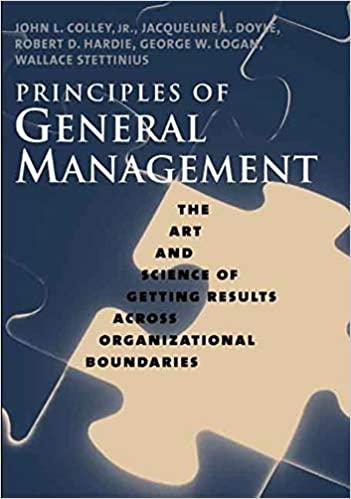Question
Randomized study of the impact of a therapeutic education program on patients suffering from chronic low-back pain who are treated with transcutaneous electrical nerve stimulation
Randomized study of the impact of a therapeutic education program on patients suffering from chronic low-back pain who are treated with transcutaneous electrical nerve stimulation
Thomas Garaud, MDa , Christine Gervais, CRNAb , Barbara Szekely, MDa,b, Mireille Michel-Cherqui, MDa,b, Jean-Franois Dreyfus, MDc , Marc Fischler, MDa,
Critical Appraisal Practice Part II Assignment
Purpose: Practice appraising the trustworthiness of quantitative research.
Appraising evidence in published literature is a multi-step process. This second part of the appraisal process provides a systematic approach to reading, understanding, and appraising the methods, results, discussion, and conclusion sections of a research study.
continue practicing this process with the quantitative research study introduced in Week 2 and used in Week 4 of this course.
To prepare
- Read 5 in the textbook
- Review Chapter 4 as needed
- View all videos/topics in Week 5 Lesson folder
- Check your knowledge with the Week 5 Quiz
- Review Tables 5-2, 5-4, 5-5
- Access the sample research study for this assignment.
Instructions:
- Read the sample research study.
- Complete the table below based on information you gather from the sample study.
- Provide the article reference at the top of the table.
- In the "Rationale" sections, provide specific information/details from the study that addresses each question listed above it. Do not alter or delete any of the existing text in the table.
- Indicate your overall appraisal of the section of the study in the far right column based on your rationale.
Source Reference: Garaud, T., Gervais, C., Szekely, B., Michel-Cherqui., Dreyfus, Jean-Francois, D., & Fischler, M. (2018). Medicine. Randomized study of the impact of a therapeutic education program on patients suffering from chronic low-back pain who are treated with transcutaneous electrical nerve stimulation: https://doi.org/10.1097/MD.0000000000013782
| Study Section | Content | Questions to Ask | Appraisal (Check one) |
| Methods | Research Design |
| ___Strength ___Limitation ___Not Evident ___Not Applicable |
| Rationale: | |||
| Methods | Sample |
| ___ Strength ___Limitation ___Not Evident ___Not Applicable |
| Rationale: | |||
| Methods | Research Protocol |
| ___ Strength ___Limitation ___Not Evident ___Not Applicable |
| Rationale: | |||
| Methods | Data Collection |
| ___Strength ___Limitation ___Not Evident ___Not Applicable |
| Rationale: | |||
| Results | Sample |
| ___Strength ___Limitation ___Not Evident ___Not Applicable |
| Rationale: | |||
| /Methods/Results | Data Analysis |
| ___Strength ___Limitation ___Not Evident ___Not Applicable |
| Rationale: | |||
| Results | Findings |
| ___Strength ___Limitation ___Not Evident ___Not Applicable |
| Rationale: | |||
| Discussion |
| ___Strength ___Limitation ___Not Evident ___Not Applicable | |
| Rationale: | |||
| Conclusions |
| ___Strength ___Limitation ___Not Evident ___Not Applicable | |
| Rationale: |
Step by Step Solution
There are 3 Steps involved in it
Step: 1

Get Instant Access to Expert-Tailored Solutions
See step-by-step solutions with expert insights and AI powered tools for academic success
Step: 2

Step: 3

Ace Your Homework with AI
Get the answers you need in no time with our AI-driven, step-by-step assistance
Get Started


